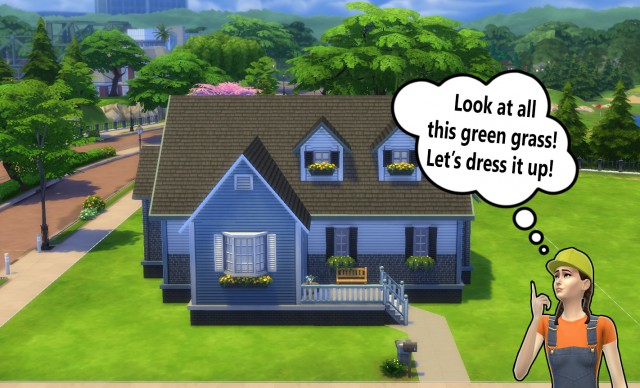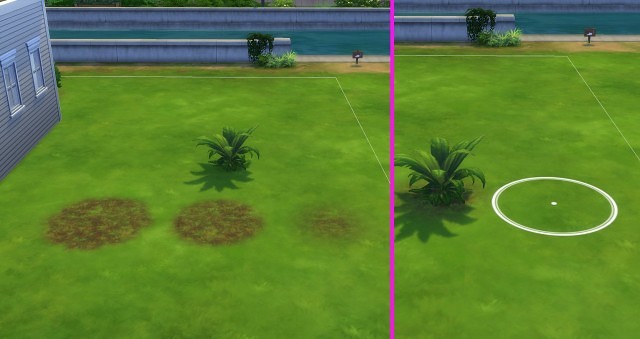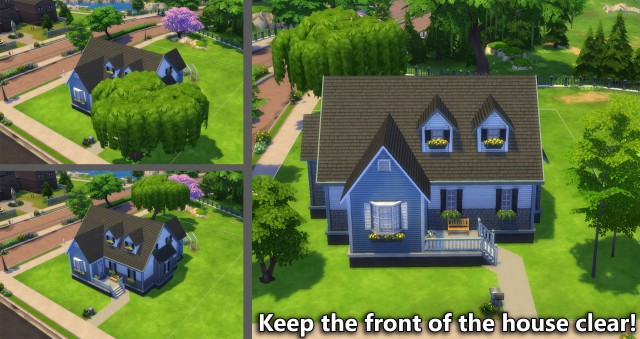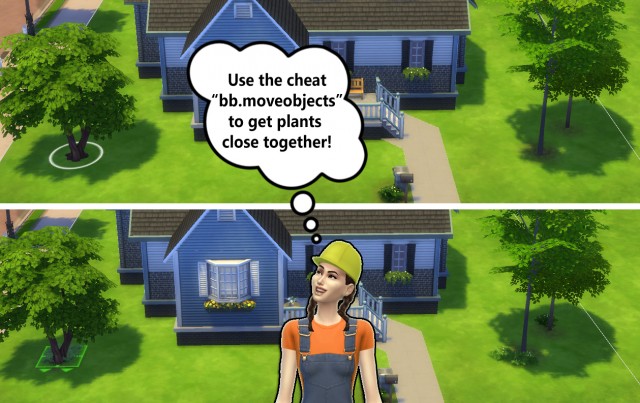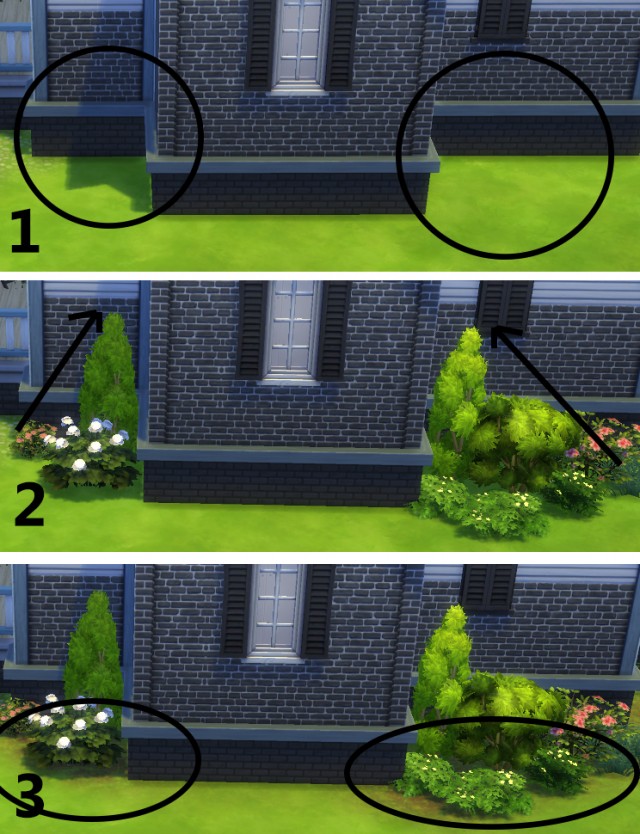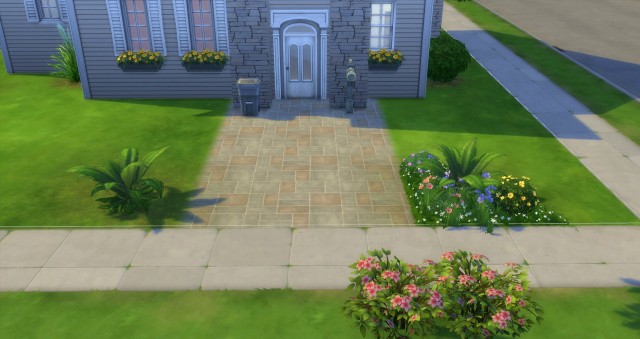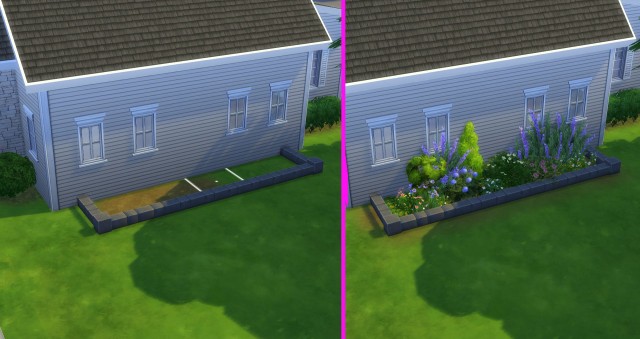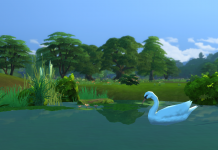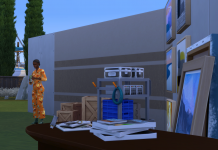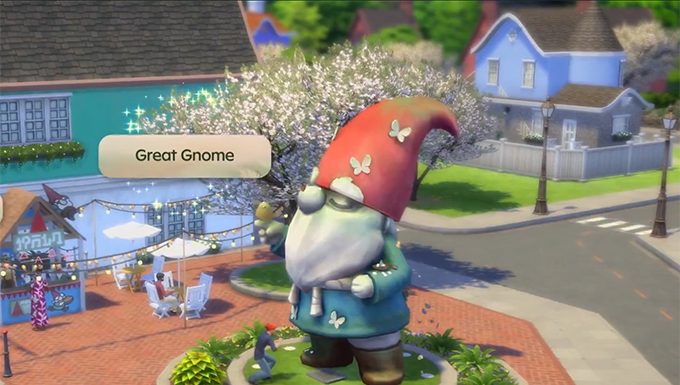We’re almost done with our box exterior! It’s looking pretty fancy, but something seems missing. Landscaping is often overlooked or avoided, thought of as superfluous or unnecessary, but adding a bit of greenery into your lot can bring a great amount of life.
The Terrain Paint Tool!
The terrain paint tool can get confusing; there are a lot of choices and it ends up looking, well, painted. So, here’s the super easy way to do paint: Take a material that’s close to the ground color with a little variation (for grass, “Scratchy in Patches”), put it on the softest setting by adjusting the slider all the way to the right, and choose the size that’ll fit around your plant width. Done!
Using the airbrush tool makes it look like the plants are actually planted and growing instead of placed. Airbrushing can also make other objects like monkey bars, decks, and desire paths look neat.
Choosing Plants
Trees are the one plant that may not fit in every lot. If you have a lot of space left over, and need something large to fill, trees are definitely a great thing to place. However, trees that are too close to the home can get in the way of the camera, and if placed incorrectly, can block the home from view. If you don’t think a tree will fit in your lot, opt for shrubs instead.
When placing trees, try clustering shrubs, grass, and flowers by the trunk to balance out the green leaves on top with some green plants underneath. Paint the area around the trunk to make it look like the roots of the tree go a lot deeper than just the surface.
When placing shrubs, vary the type of each plant so you don’t get caught up in patterns. Place the tall plants first, then fill in the gaps where dirt can be seen with low-lying plants like the “Proud Pansies” or “Dull Daisies.”
Add bushes or taller plants in corners and empty wall spaces, where plants would gather. Instead of alternating heights, create a smooth slope from tall plants to smaller plants, ending with the low plants on the edges.
In the lower pictures, you can see (1) where suitable plant spaces are, (2) the gradual slope from tall plants to small plants, and (3) the soft airbrush that indicates a root system growing.
Border vs Borderless
In a borderless garden, you must rely on the airbrush and the low lying plants to frame your garden area. Like the above picture and below, borderless gardens look best when there is little space between the plants.
Turn “bb.moveobjects” on, and hold the alt-key to move plants freely. Overlapping is the key to great garden variation and can make a small space look packed with blooms.
On the other hand, bordered gardens have clear ending points. Airbrush the inside to make it dirty, but go a little outside the border to make the transition less harsh. The same planting process applies as with the borderless gardens: pick some tall plants, and fill in with smaller plants. Fences give a structured look to your garden, and can make a house look wealthier and less rustic. Whether you do fenced-in or borderless is your personal choice!
Finished!
If you’ve been following along, you’re now in possession of a box that doesn’t look like a box at all! We started with picking an interesting shape, using coordinated color on the walls, and matching the fences and floors. After that, we added interesting wall details, and then filled in the rest of the spaces with decor and landscaping!
Up next for Out of the Box:
We’ll take a short break next week with the guide, but we’ll see how the same rules can apply to modern homes and town homes! Then the week afterwards, we’ll start inside the box!
Review
- Use the terrain paint on the softest setting under plants to make them seem like they’re growing, not placed.
- Place trees where there is a lot of space, and gather plants underneath them to balance out their upper leaves.
- Taller plants go first, then fill the gaps with low-lying plants. Put plants of like heights next to each other to smooth out the slope.
- Choose a bordered or borderless garden depending on how clean or wild you want your gardens to look.
If the article was a bit wordy for you, take a look at the video below!



